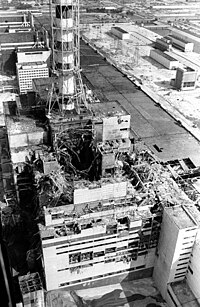
Photo from wikipedia
Introduction: An expert government committee in Japan decided to revise the chance of a Nankai Trough earthquake in the next 30 years from 70% to between 70 and 80% in… Click to show full abstract
Introduction: An expert government committee in Japan decided to revise the chance of a Nankai Trough earthquake in the next 30 years from 70% to between 70 and 80% in 2017. If a mega-earthquake occurs, medical institutions in disaster regions are required to perform self-contained activities during the super-acute phase. Human damage varies depending on whether medical functions can be sustained, particularly in rural areas and isolated islands. Here we examined actual situations. Aim: To identify the issues of a disaster medical system in rural areas and isolated islands that need solving. Methods: Regarding disaster preparedness planning, we conducted a survey on 10 hospitals undesignated as disaster key hospitals of remote area medical care bases (survey group), and 69 hospitals designated as disaster key hospitals (control group) in three prefectures in the Tokai region (Aichi, Mie, and Shizuoka). Results: We received responses from four hospitals in the survey group and 52 hospitals in the control group. The hospitals in the survey group responded that they could accept 74 severe casualties and 85 moderate casualties. We identified problems such as insufficient stockpiling of fuel, water, and oxygen, and lack of a prioritized lifeline supply contract. Discussion: It was predicted that human damage would be relatively minor given smaller populations in rural areas and isolated islands in the Tokai region. However, the number of patients would exceed their acceptance capacity. Moreover, the system for sustaining infrastructure is not adequate for providing medical services. Thus, it was indicated that these regions would be isolated in terms of disaster measures. It is imperative to establish a disaster medical system in rural areas and isolated islands that lack adequate disaster medical systems to manage Nankai Trough earthquakes.
Journal Title: Prehospital and Disaster Medicine
Year Published: 2019
Link to full text (if available)
Share on Social Media: Sign Up to like & get
recommendations!